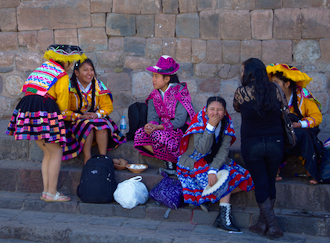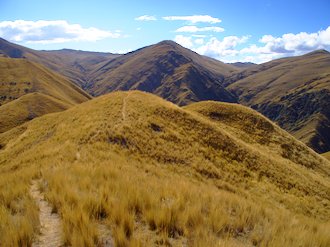Jun 27, 2016
Backpacking South America (Part 5)
We are in Cusco (Peru) since what now amounts to, I think, over two weeks. At first we only wanted to pass through quickly, but somehow ended up staying here. I like it when this happens unexpectedly because one is surprised by a city. The same happened in Sucre and La Paz. My first impression of Cusco was along the lines of “too many tourists, better pass through quickly”. But as it turns out there is a broad variety of alternative offers and activities around here. It is very easy to get lost in discovering interesting stuff around. For example, there are many many vegetarian/vegan restaurants around here. Even though I don’t live strictly vegetarian it is still very interesting for me to visit such restaurants. There are usually a lot of ingredients involved which are uncommon in other restaurants (Tahin, Seitan, Kombucha, etc.) and this usually results in interesting dishes. Around here it is e.g. possible to find vegan cheese plates (the full deal, with grapes and wine, made from nuts fermented with Kombucha) or Tamales made from a certain type of sweet, large sized corn which is very common in Peru. Our culinary explorations culminated in an extensive vegan cooking class, which I enjoyed very much. We got to know a number of people around here and this yielded interesting conversations as well as a hike into the peruvian mountains with camping, bonfire, etc..
In the last days we visited Machu Picchu, which is surely the most popular activity in Peru. We had originally excluded this ancient Inca city from visiting, due to our assumption that this is probably the most touristy thing one can do in Peru. But as we met more and more “non-touristy” backpackers along the way we decided differently. Quite often we were told that “Yes it is the most touristy thing, but it is also really worth a visit”. There are also a lot of locals visiting and we finally decided to do it as well. However, getting to Machu Picchu is another story. Foremost, you can’t “just” go there, since only 2.500 people are allowed in each day. Thus you need to get a ticket on time, since tickets might otherwise run out. Currently, this does not seem to be an issue. Well, at least for Machu Picchu — the neighboring mountain Huayna Picchu, which is said to provide a nice overlooking view on Machu Picchu, is sold out until August (it its limited to 400 visitors a day). A next challenge is getting to Machu Picchu without spending all your money. Aguas Calientes is the city just below Machu Picchu where everybody needs to get. Most people spend a night in this city and visit Machu Picchu the next day. There are expensive trains to Aguas Calientes, but no streets. Since visiting Machu Picchu is the sole purpose of the city, prices are much higher (2-3 times) than in other peruvian cities. In order to get up to Machu Picchu (the site is on top of a steep mountain) you can either take an expensive bus with queues of >1 hour or do the free option and take a steep walk up the hill. In the end we did Machu Picchu in a cheap way by walking everything which was walkable. We took a cheap bus from Cusco to Hidroelectrica and from there walked to Aguas Calientes along the train rails. We then spent a night in Aguas Calientes and walked up to to Machu Picchu very early in the morning the next day (and later that day the whole way back to the cheap bus).
So in short, Machu Picchu was worth the visit. It really is quite impressive. This was actually an Inca city 500 years ago and when being there it also feels like one. There are temples, prisons, upperclass houses, lowerclass houses, plazas, agricultural sites, etc.. One can easily imagine how the city must have been pulsating and flowing, even though everything is deserted now. Furthermore, the location high up the mountains between other, surrounding mountains is superb and very impressive. The photos of this monument cannot convey the dimensions of this ancient city and I think one needs to be there to be able to grasp this.








